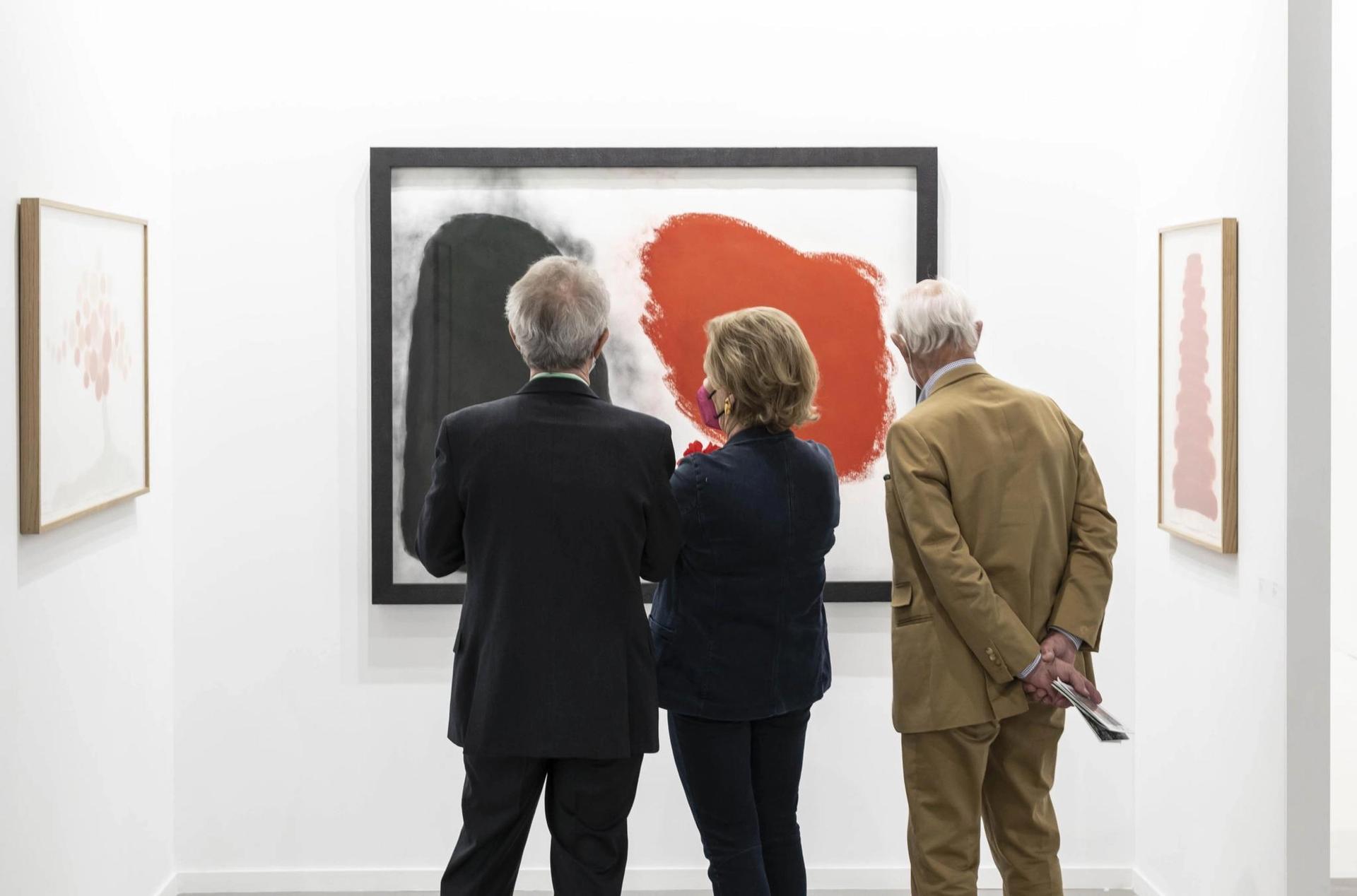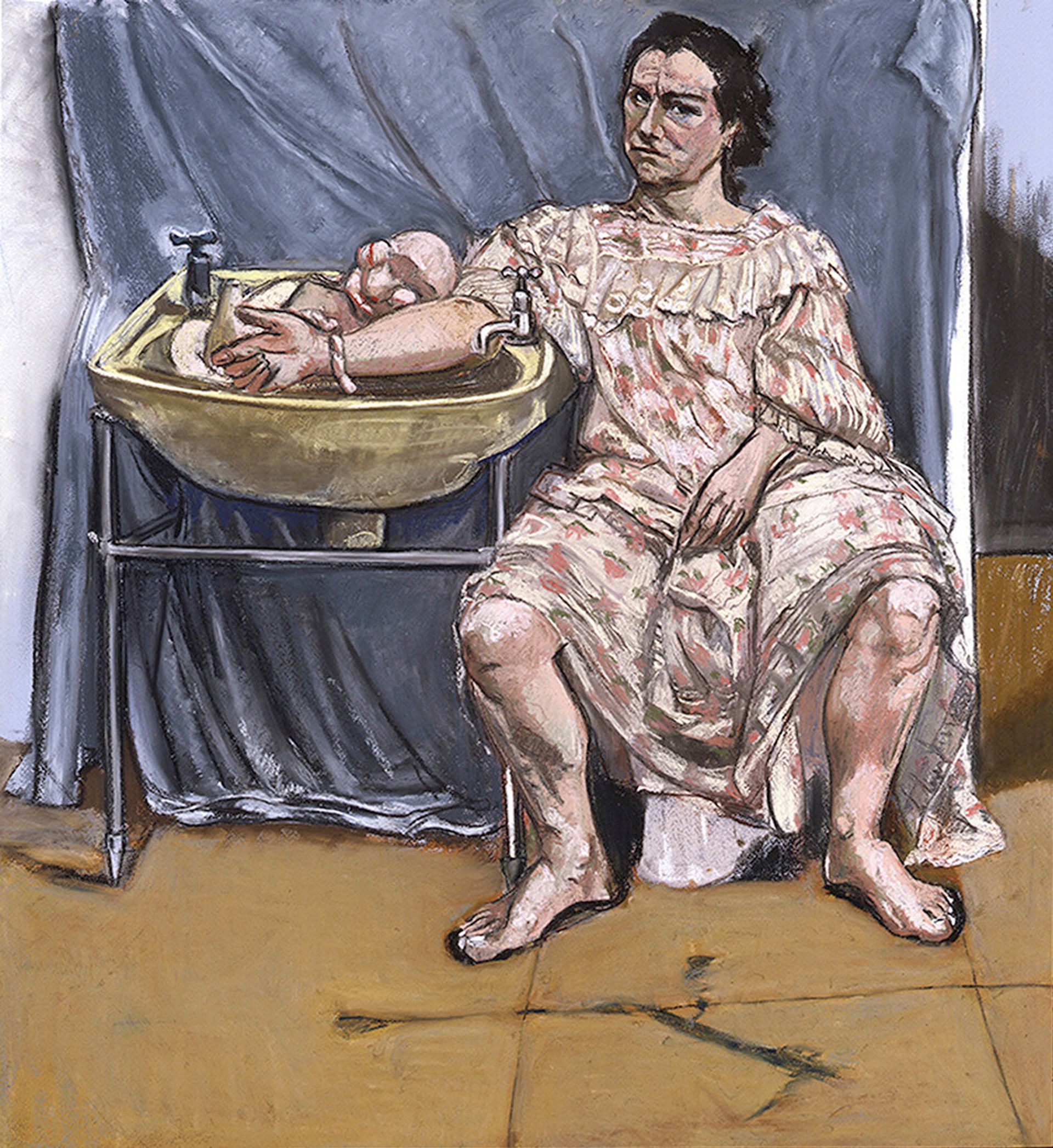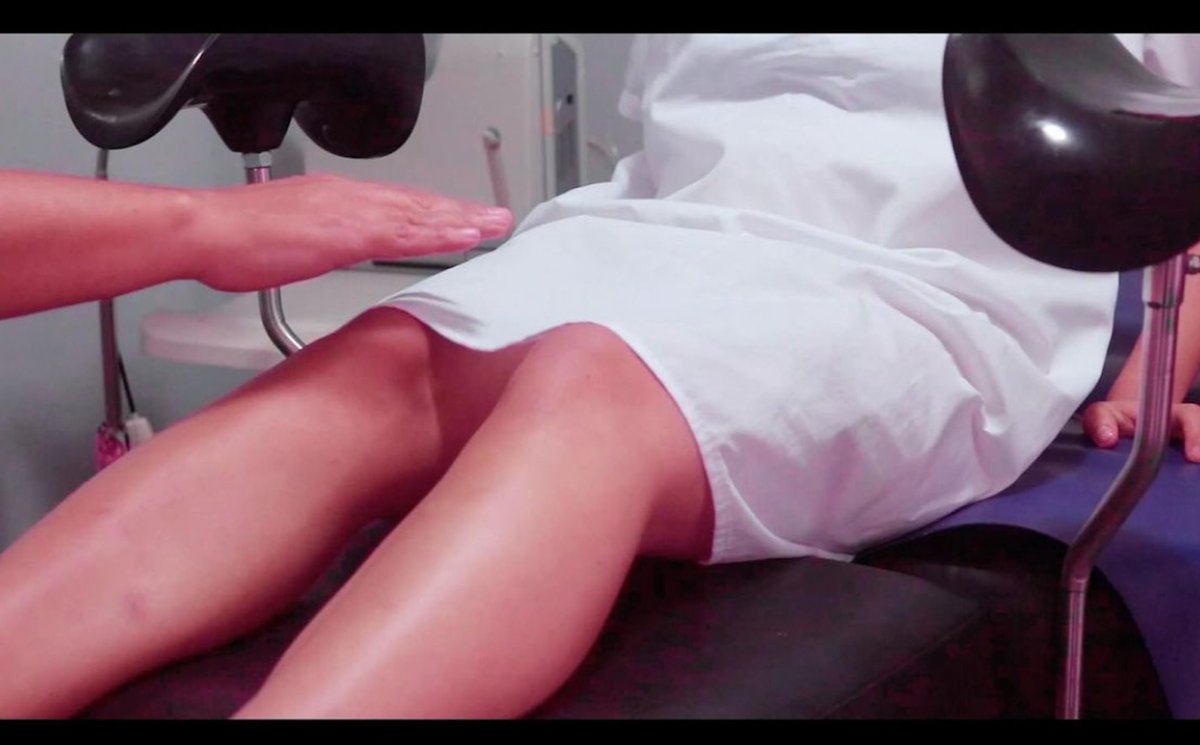Video documentation of the Peruvian artist Wynnie Mynerva getting her vagina surgically sewn shut greeted visitors at the preview of the 41st edition of Arco Madrid, which opens to the public tomorrow (until 27 February).
The 2020 work, a jaw-dropping commentary on societal expectations of women and the patriarchal medical system in Peru, was brought by the Lima-based gallery Ginsberg, one of 20 from Latin America exhibiting at the fair, which last year was forced to hold a pared down version with only European galleries due to the pandemic. This is up from the 16 Latin American galleries that attended the fair's last full version in 2020; their presence marks a welcome near-return to form for Arco, which maintains its longstanding reputation as the leading European platform for art from the Spanish-speaking world.

Visitors at the 41st edition of Arco, Madrid.
This year is also one of celebration for the fair, having delayed its 40th anniversary from 2021, and director Maribel López reiterates its brand as: "Spain, Europe, and Latin America". As one dealer, who wishes to remain anonymous, adds, Arco’s other draw is a selection process that is prestigious enough to attract prominent institutions from Spain and neighbouring countries, but considerably less stringent than other European fairs such as Frieze London or Fiac.
For this year's edition, 159 galleries—five more than in 2020—gathered in the vast Ifema convention centre, which was turned in the early stages of the pandemic into a Covid hospital. As usual, regional cities in Spain maintained a strong presence, including Valencia and Santiago de Compostela, joining galleries from Madrid and Barcelona. The bulk of European galleries are from Portugal, France, Germany and Austria.
Two VIP days means that second-day sales are more common than at some other fairs. But the relative absence of Latin American collectors is felt by a number of dealers. Among them is Thomas Krinzinger, the director of the Vienna-based gallery Krinzinger, which has been returning to the fair almost every year since its launch in 1980. He describes visitors from South America as “noticeably lacking”, but caveats that the hordes of Swiss, German and French collectors have helped to soften the blow—Krinzinger had just sold a large Monica Bonvinci leather belt work to a Swiss collector for €80,000.
Prominent collectors from Latin America who did come included Pedro Barbosa and Patricia Moraes from Brazil, and Eduardo Salazar and Juliana Hernández from Bogota, Colombia. Meanwhile major European collectors on the opening day included Patrizia Sandretto Re Rebaudengo and Francesca Thyssen-Bornemisza, who purchased 10 works at the opening including a Kader Attia ceramic piece from Mor Charpentier, Paris, a Miler Lagos drawing from Max Estrella Gallery, Madrid and an Eduardo Navarro ink on paper from Proyectos Ultravioleta in Guatemala City.
The institutional presence was also strong—although museums will only reveal their purchases on Friday—with visits from the Reina Sofia in Madrid and Centre Pompidou in Paris. The municipality of Mallorca bought a huge aluminium sculpture by the Spanish artist Ampardo Sand depicting a pair of cupped hands from the Mallorca gallery Baro for €60,000.

Neugerriemschneider's booth at Arco Madrid
At the upper end, the most expensive work on show is a 1920 Joan Miró painting brought by Galeria Leandro Navarro for €2m, which had not yet placed by the end of the first preview day.
While mega galleries such as Hauser and Wirth and David Zwirner have not returned this year, Thaddaeus Ropac has continued its longstanding presence at the fair and brought one of its most expensive works, a Georg Baselitz painting for €1.2m, which sold to a Spanish collector. Much of the booth was given to a large presentation of Martha Jungwirth paintings from the past three years, with prices ranging from €40,000 to €275,000, and virtually all had sold by the afternoon of the preview to private collectors. While, according to Ropac, Jungwirth is not well known in Spain, he hints that a major Spanish institutional show of the artist is now imminent.

Paula Rego's Girl with a Foetus (2005). Courtesy of Marlborough Gallery.
Other signs of the fair's instutional promise is Berlin gallery neugerriemschneider's eye-catching installation by Renata Luca of large, upended wooden floorboards which dominates the booth—a cumbersome piece that is unlikely to be bought by a private collector. And Perrotin, is “in talks with a major institution", according to a director who does not wish to be named, to sell its most expensive work, a Jesús Rafael Soto wall-mounted sculpture, for €600,000.
Since taking Arco's helm, Lopez has made it her mission to ensure a strong female artist presence, and refreshingly, women commanded some of this year's top prices. Marlborough has brought a large, 2005 pastel-on-paper Paula Rego depicting a haggard woman sitting next to a foetus lying in a sink, priced at €800,000.
Further buzz was generated by the launch of a group of so-called "ethical collectors", who have announced a manifesto detailing how collectors can contribute to a positive art market. The rulebook, available online, stands against flipping, freeports, art washing and advocates for respecting the personal space and time of artists who you financially support. The initiative, which so far has eight members, has been endorsed by the likes of the artist Hito Steyerl.


